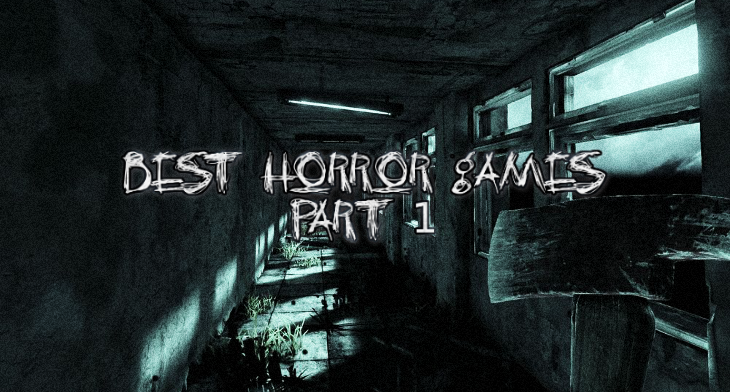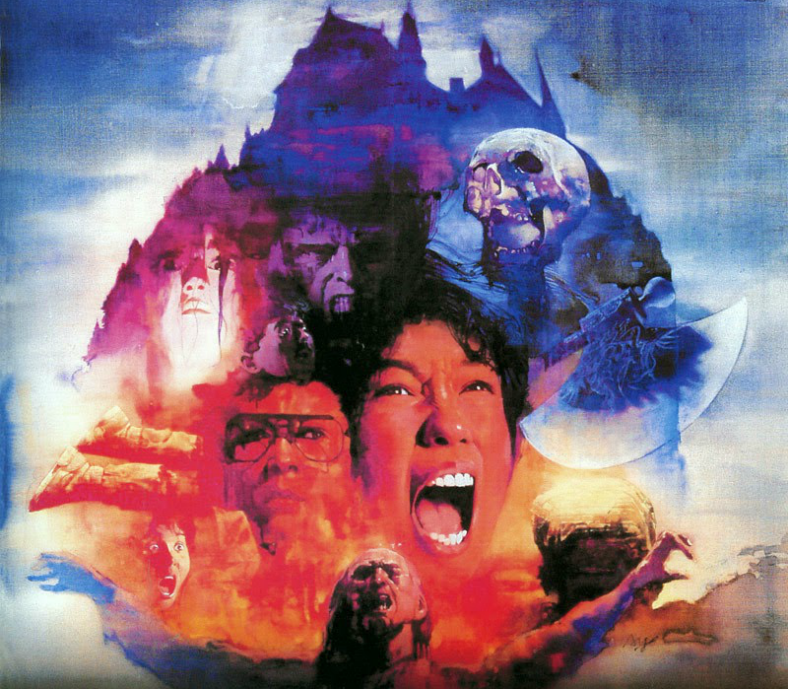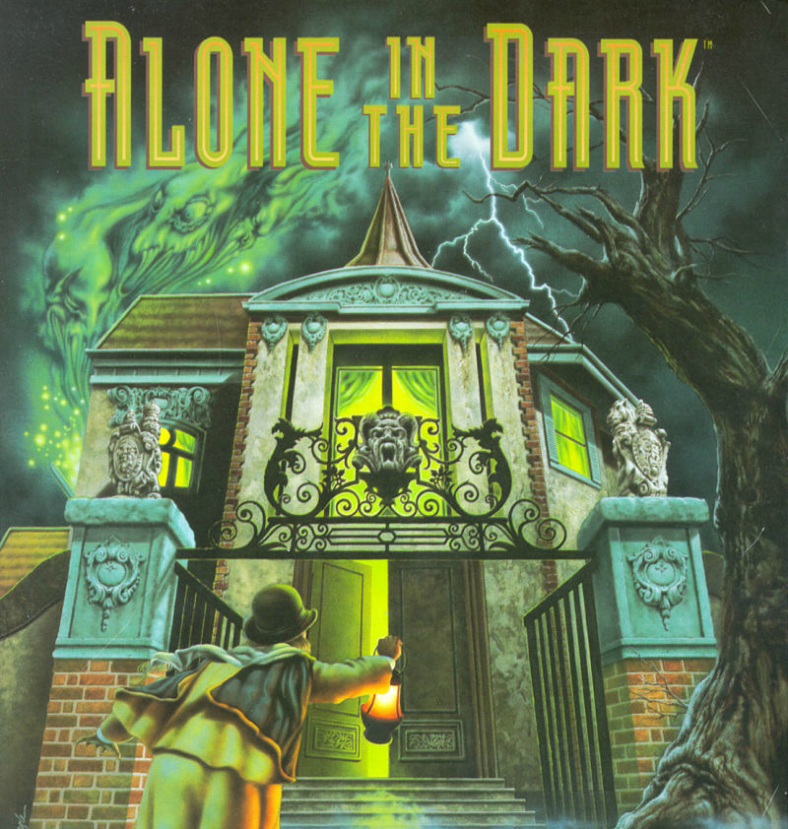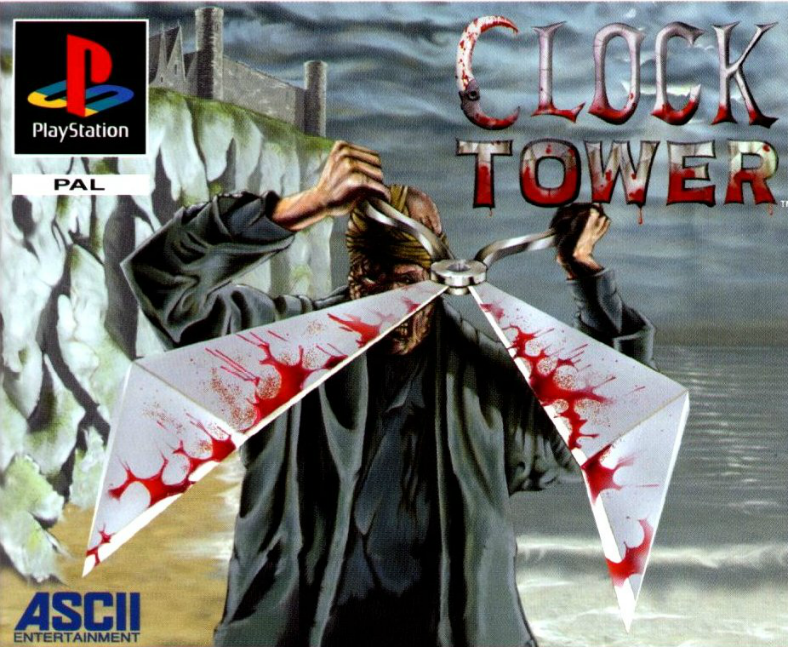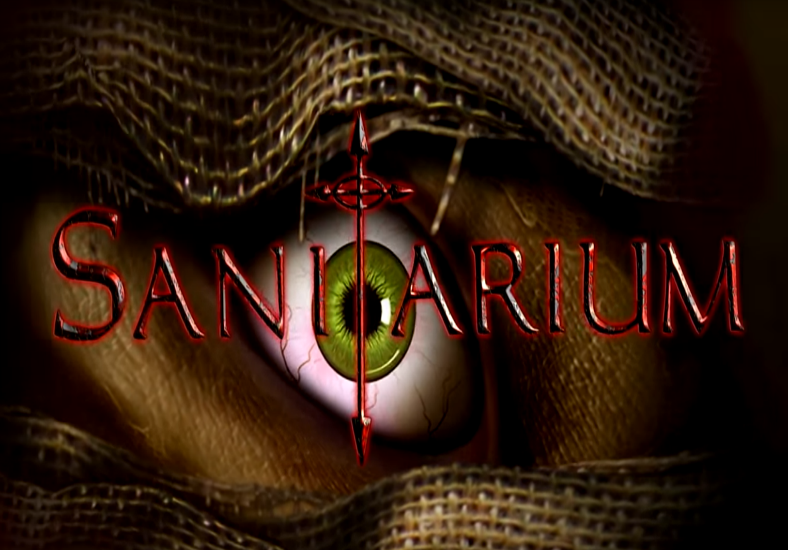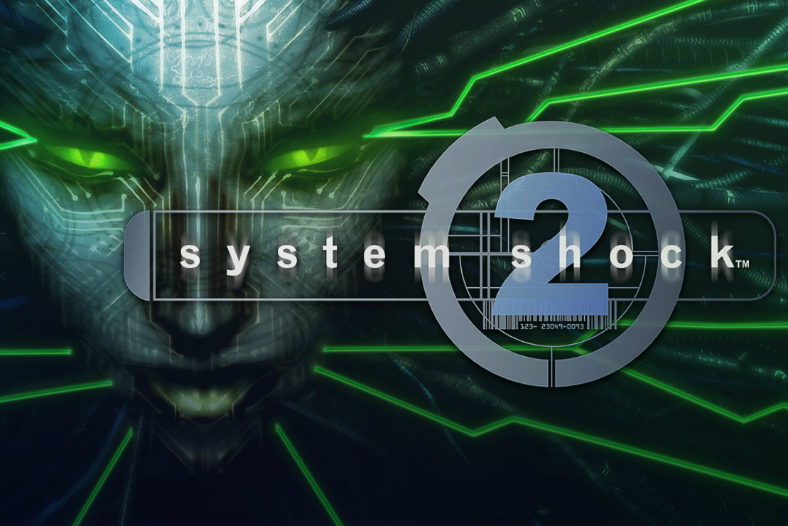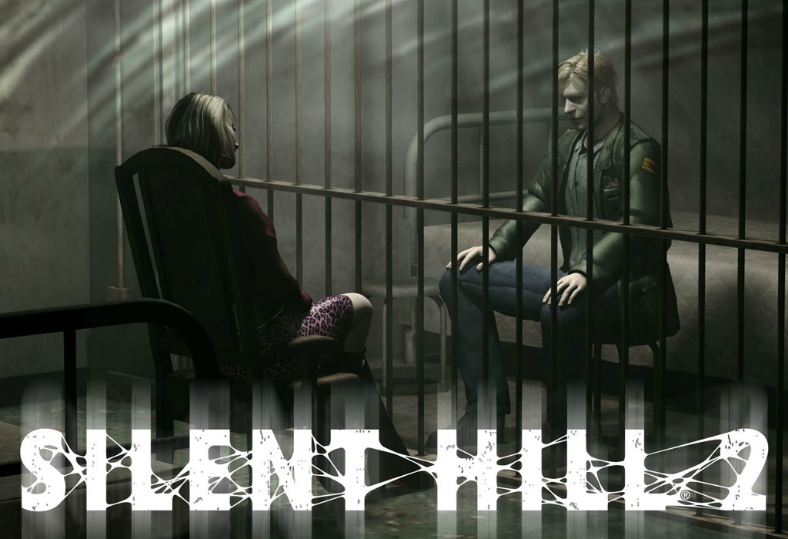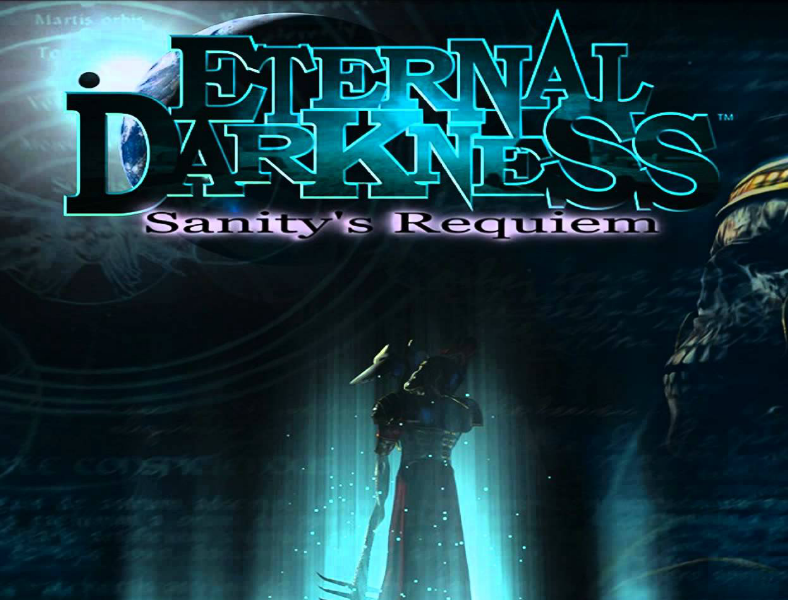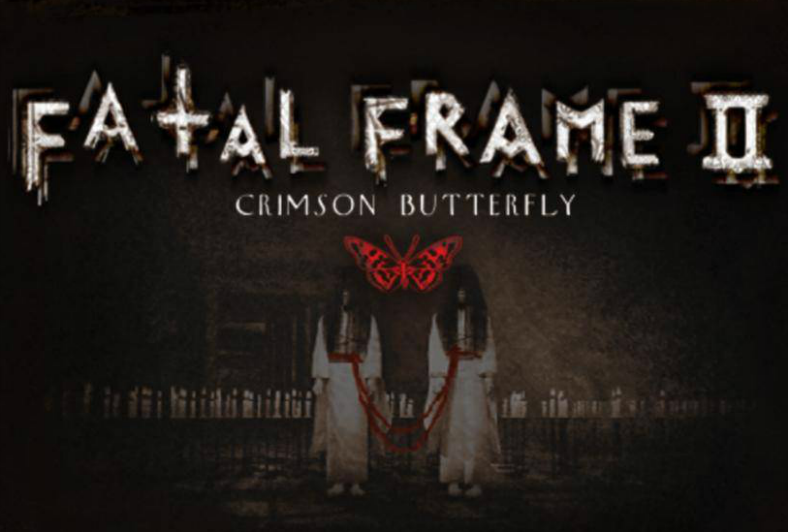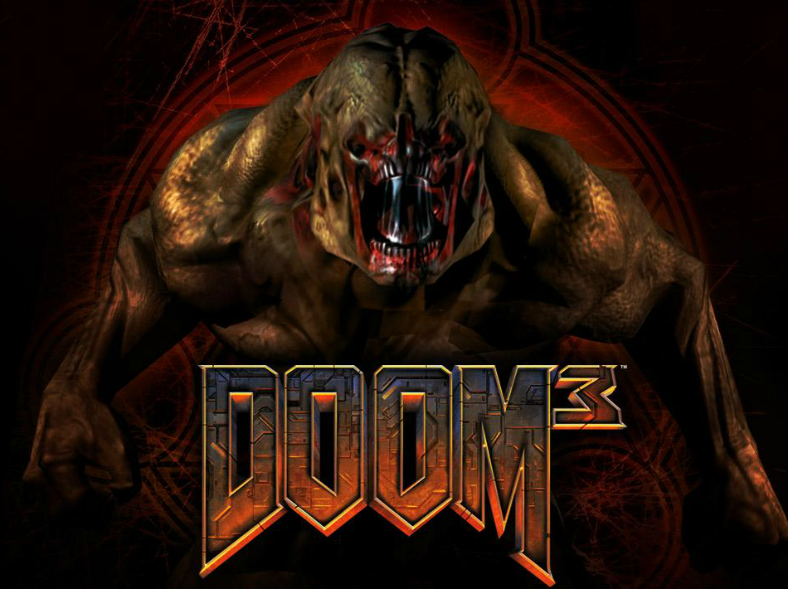Halloween is almost here, and though this occasion doesn’t entirely have to revolve around horror themes, many people enjoy it by either getting scared or scaring other people. For children, most of them would dress up as scary characters and wear Halloween makeup and knock on their neighbors’ doors to ask for tricks or treats. Many horror movies are also released during or before this occasion, movies such as the Saw, Halloween, and Paranormal Activity film series.
But for others, especially video gamers, they usually spend the Halloween season playing horror-themed video games to keep their adrenaline pumping. I, myself, enjoy playing scary video games regardless of the occasion. But, during the last weeks of October, I usually end up Googling more horror games and playing them because I simply love them.
Below, we have provided you with a list of some of the best horror games from the late 1980’s to the early 2000’s, starting with the most notable one from 1989 which is Capcom’s Sweet Home and ending with 2004’s Doom 3. Upon seeing the list below, you might be surprised that we missed out on multiple games under the same franchise, like Silent Hill 2 being here but the first title isn’t. The reason behind choosing only one from each franchise is to allow room for other games to get into the spotlight. We will be writing a follow-up to this list of the best horror games on a separate article, but if you are looking for a list of Xbox One games, you may want to check out our list of the best games in Xbox One that were released in 2017.
Sweet Home (1989)
The inspiration behind the widely-popular Resident Evil franchise, Sweet Home is a survival horror role-playing game that was developed and published by Capcom for the Nintendo Entertainment System (or Family Computer in Japan). The game was released in December 1989, but due to its violence and horror themes that were too much for other regions during the time, the game was never released on consoles outside Japanese territories.
The plot of the game takes place in an abandoned mansion that used to be owned by a famous artist and is now inhabited by supernatural beings. This artist left behind many of his artworks inside his home before he mysteriously vanished. A team of five people plans on retrieving these paintings to restore and publish them. Just as they entered the mansion, they are greeted by the angry soul of the artist’s wife, who intends to kill anyone who enters the house until she is reunited with her son, who died many years prior to the events. It is now up to these five people, under the player’s control, to fight off monsters that they come across with, and find the whereabouts of the artist’s son to finally give peace to the souls of the entities that are haunting the mansion.
Many would consider Sweet Home as the game that gave birth to the entire survival horror genre, since it heavily inspired the Resident Evil games which, in turn, inspired many other survival horror games. But many would disagree to this claim, saying that the entire genre began with Alone in the Dark (see next game below) since it resembles more closely to modern games than Sweet Home. For more Nintendo games, you may refer to our list of the best Nintendo Switch Games.
Alone in the Dark (1992)
Here is another game that, as mentioned earlier, many considered to be one that revolutionized the survival horror genre, which has contributed to influencing many of today’s best survival horror games – most notably Resident Evil – and also one of the first PC horror games to be fully rendered in 3D. Alone in the Dark is developed and published by Infogrames for the MS-DOS and was originally released in 1992, though it regained recognition in 2014 when it was re-released by Atari as a port for the iOS.
Alone in the Dark is a single-player survival horror game based on the writings by H.P. Lovecraft. It is set in the 1920’s, and places the player in control of either of the two titular characters, Edward Carnby – a private investigator, or Emily Hartwood – the niece of a famous artist who owns the mansion where the game takes place. These characters have been trapped inside the mansion and must find a way out while dealing with supernatural creatures that lurk around every corner in order to survive, and this can be done either by hand-to-hand combat, or by weapons that you can find around the mansion.
Aside from just avoiding or defeating enemies , the player also needs to explore the mansion to find clues that can fill them in with the game’s story line, as well as provide them with assistance on how to solve puzzles which is also one of the most prominent elements in the game. Puzzle-solving is required to help the player defeat some enemies that can not be killed by weapons, and it can also enable the player make progress through the game.
Clock Tower (1996)
Games that disable the ability to combat enemies have now become one of the standards in the survival horror genre, with titles such as Outlast and Amnesia: The Dark Descent, this mechanic leaves the player with no other choice than to find other ways of survival which includes running away or hiding from the enemies’ sight. Though some games may include ways for you to defend yourself from enemies should you encounter them, games such as Penumbra and Alien: Isolation, it will provide you with temporary safety since it doesn’t actually kill the enemy. Clock Tower is one of those games, and it is also the one of the firsts to introduce such gameplay mechanic.
Clock Tower is not your average survival horror game in which you pick up weapons and ammunition to keep you armed and defensive against the opponents that you encounter throughout the game. Instead, the only options you have in order to survive each level is to either run away or hide, and you will only be facing against a single enemy for the whole duration of the game, a psychotic serial killer known as the Scissorman, who wields a giant pair of scissors and uses it to kill his unfortunate victims. Dressing up as the Scissorman for Halloween is not hard to pull off, but if lack time, you may also check out our list of some last minute Halloween costume ideas.
In Japan, this game is known as Clock Tower 2, considering that this actually serves as a follow-up to a game that was released for the Super Nintendo in 1995 under the same name. A unique feature about this game is the means of controlling you character, since it involves a mouse cursor that you move around the screen to enable your character to walk or run and to interact with objects. This control scheme resembles that of point-and-click games on the PC such as the Monkey Island games and Sanitarium (see next game below) and is able to make the experience even more nerve-wracking since it limits your full control over your character.
Sanitarium (1998)
For an old-school horror game that is considered to be one of the best games of all time, Sanitarium has become a household name for video game junkies, and it doesn’t even rely on jump scares or gore just to call it scary. This game focuses more on being a psychological horror game with disturbing themes that can keep you up all night.
Sanitarium is a psychological horror point-and-click adventure game that was developed by DreamForge Intertainment and published by ASC Games. It was released for the Microsoft Windows in 1998. On October 29, 2015, the game was released as a port for iOS and Android devices, and this port was both developed and published by DotEmu. For other iOS games, you want refer to our list of the best iPhone games in 2017.
The game puts the player in control of the unnamed titular character, who has forgotten his identity and all events that have led to the present point. This man, who is being referred to other minor characters as Max, has been in a car accident that left him in a coma. And after waking up, has found himself confined in a sanitarium without any memory of who he is, where he came from, and how he got there.
Throughout the game, Max will travel across many locations that have their own distinct atmosphere, and these locations will often present itself as an imaginary world. This results in confusing players whether the world their character is in is real or actually a result of Max’s imagination, and this makes them question his sanity.
System Shock 2 (1999)
A sequel to the critically acclaimed first-person role-playing video game, System Shock, System Shock 2 is able to make its name into this list because it incorporated some horror elements into the game. This shift in tone helped the game become more superior than its predecessors. But even though this game was able to gain a lot of positive reviews from critics as well as being included in many “best games” lists, it was not able to meet the expected commercial sales during the time of its release.
System Shock 2 is a first-person role-playing survival horror video game that was developed by Irrational Games and Looking Glass Studios, and was published by Electronic Arts in its first release. The game was released on August 11, 1999 for the Microsoft Windows. In 2013, the rights of the System Shock franchise were secured by Night Dive Studios which allowed them to release updated versions of the game for modern computers, Linux, and OS X systems.
Similar to its predecessor, the game is a hybrid of an RPG and FPS game, but with added survival horror elements this time around. This allowed players to enjoy the game as a horror first-person shooter and enabled them to customize their character – which is a common feature for role playing games. Character development is also a necessity for this game, since it can help players in dealing with the more challenging enemies that will be encountered in the later levels.
Silent Hill 2 (2001)
Silent Hill has already spawned a total of six sequels to the main series, a re-imagining of the first game, an on-rails shoot-em-up arcade game, two games for mobile devices, a spin-off game, and an unfortunate cancelled title. This franchise was also able to make its way to the big screen by being adapted to film, and this too, was able to spawn its own sequel. It was very hard for us to pick out the best one from among the franchise, considering that a lot of them, especially the first four entries, were very good even to this day. But since we had to choose only one from each franchise, we would have to go with the first sequel to the original game. Speaking of mobile devices, you may also want to check out our list of the best games for mobile devices in 2017.
Silent Hill 2 was able to bring back most features that made the first game very popular, but to a far better extent, since the consoles and systems during the time of the game’s release were more advanced and were capable of rendering more graphical details than the ones that were used during the release of the first game. Another reason that made this game so much better than the other titles is its story line, which deals about depression, guilt, and many other psychological disabilities, you will either be scratching your head or left with your jaw on the floor after playing the game the first time around.
The plot of the game takes players into the shoes of James Sunderland, who has traveled all the way to the abandoned town of Silent Hill, after having received a letter from his wife, Mary, who has already been dead for three years. This led James to go to the town since the letter stated that Mary will be waiting for him at their special place, a place that only the two of them know. It is now up to James, under the player’s control, to unravel the truth behind this mysterious letter, and also to fully accept what been long forgotten.
Eternal Darkness: Sanity’s Requiem (2002)
For another game that was widely praised by critics but failed to become a commercial success during the time of its launch, Eternal Darkness: Sanity’s Requiem proved to be a franchise that had a lot of potential but was lost due to its failure in sales. Even though this game was able to receive several awards, its financial loss resulted in the unfortunate cancellation of its planned direct sequel.
Eternal Darkness: Sanity’s Requiem is a psychological horror action-adventure game that was developed by Silicon Knights and was published by Nintendo. Though the game was originally planned to be released on the Nintendo 64, it eventually made its way to the Nintendo Gamecube where it was finally released on June 23, 2002, October 25, 2002, and November 1, 2002 in North America, Japan, and Europe, respectively.
Throughout the game, the player will be controlling multiple protagonists that include a psychologist, an archaeologist, a student, and a firefighter, just to name a few. The setting of the game will also vary from one location to another, and in different points in time, and the player will be taken back and forth between these settings.
Having similar gameplay mechanics to more recognized survival horror games such as Resident Evil or Silent Hill, Eternal Darkness: Sanity’s Requiem added a unique gameplay feature known as “sanity effects”, which is a meter that measures your character’s level of sanity. The more times you get spotted by an enemy, the meter slowly decreases, and this results in unusual events which include a tilted camera angle, unsettling sound effects, bleeding on walls, and even the character suddenly dying.
Fatal Frame II: Crimson Butterfly (2003)
It is seriously very hard to pick out just one game in the Fatal Frame game series, since all of them are actually very good and very scary, but we had to go with the second entry to the franchise because of its aesthetic presentation, including the game’s use of red as the dominant color. Fatal Frame II: Crimson Butterfly, or Project Zero II: Crimson Butterfly in Europe proved to be the most superior with regards to the story, gameplay, the atmosphere, and the overall presentation of the game.
Fatal Frame II: Crimson Butterfly is a survival horror game that was both developed and published by Tecmo. The game was originally released for the PlayStation 2 in 2003, then a Director’s Cut version was released for the Xbox the following year. In 2012, a remake of the game, titled Project Zero 2: Wii Edition was released for the Nintendo Wii, but the release was exclusive only in Japan and Europe. On July 30, 2013, the game was made available for download on the PlayStation 3, but the availability was also region-locked and only consoles in North America are able to download the game.
The game follows the protagonist, Mio Amakura, as she and her twin sister, Mayu, explore a town where they used to play. This town has been long abandoned and is now inhabited by ghosts, and as the twins explore the town to uncover its secret, they will also need to fight for their survival against these ghosts and evil spirits. And just like its predecessor, the only way of dealing with these enemies is with the use of the Camera Obscura, which is an enchanted camera that can defeat ghosts by taking pictures of them. You may also take ideas from this game’s use of colors to decorate your home if you plan on holding a Halloween party, or you may also refer to our list of Halloween decoration ideas to help inspire you.
Doom 3 (2004)
When speaking about the Doom franchise, we have had multiple sequels already which have been debated as to whether they should fall under the sci-fi action genre, or the horror genre. And while many would say, myself included, that nothing can ever top the first two Doom games, not even the 2016 reboot, they leaned more towards being an action-adventure first-person shooter, and if we are talking about their title that included horror elements, then it would have to be Doom 3.
Doom 3 is a sci-fi horror FPS video game developed by id Software and published by Activision. It was released worldwide on August 3, 2004 for the Microsoft Windows, then ported to the Linux and the Mac OS X. Under Vicarious Visions, the game saw another release on April 3, 2005, and this time, it was for the Xbox console. In October 2012, the game was again re-released under the name Doom 3: BFG Edition, which was published by Bethesda Softworks. This version featured enhanced graphics and sound, more horror sound effects, and two new expansion games – Resurrection of Evil and The Lost Mission – and it even includes copies of the first two Doom games.
Doom 3 served as the developer’s first attempt at rebooting the franchise after Doom 64, which was released for the Nintendo 64 console back in 1997. The developers of this game decided to take a different route by slowing down the pace of the gameplay, limiting the ammo supply, maximizing the use of shadows and dark scenarios with your only tool for illumination is a flashlight, and putting more emphasis on scares. So if you are looking for a Doom game that can scare the crap out of you, you may want to try out Doom 3, that is, if you haven’t played it yet. Even though this game is old, it is still worth giving as a gift, but if you choose to go with alternatives, you may also check out our list of Halloween gift ideas.
Related Posts
Road Bike Trends in 2023
Top UX Design Trends 2023
Exceptional Packaging Ideas in 2023
10 Technological Innovations in 2023 that will Change Your Life
Mobile Phone Designs 2023
Top Sports Bikes of 2023
9 Best Designed Ads for Olympics 2023
10 Must Have Makeup Products for Fall 2023
Best Bridge Camera Designs of 2023
Best Calendar App Designs for iPhone 2016
Best Digital Camera Designs 2023
Mini-Camper Designed by DubBox Out in 2023
Most Awaited Smartphones of 2023
9 Tech Wearable Trends to Watch Out in 2023
Must-Have Skin Care Products for 2023
